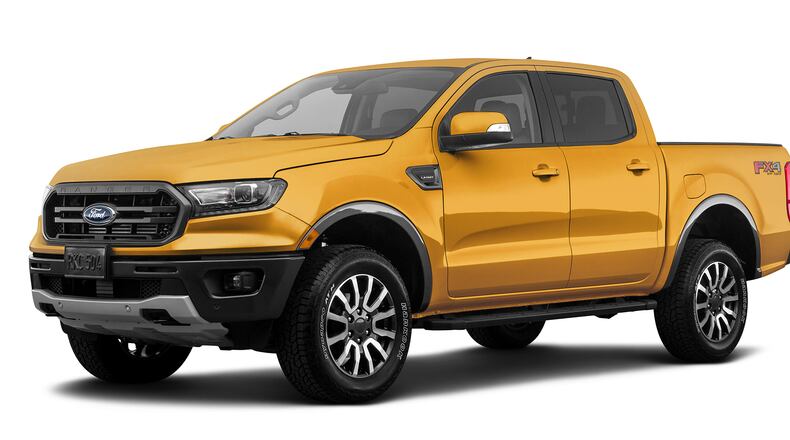Ironically, the Ranger, which is considered a compact truck, doesn’t feel very compact. In fact, it feels F-150ish. That’s a good thing for most consumers. Last year, I felt the Ranger was too basic. This year, my tester was the top-of-the-line Lariat trim; that might have something to do with changing my opinion somewhat.
The 2020 Ranger feels nice. It also, as I mentioned, feels big. The vantage point from the driver’s seat is excellent. Running boards existed on my tester but weren’t really needed. Even Mrs. Driversside commented that running boards weren’t needed to get in or out but were a nice aesthetic element. My race red-colored Lariat Ranger with the five-foot box looked impressive. It felt modern and attractive.
Ford has really done wonders with turbocharging technology. Their engineers have mastered getting maximum performance out of smaller engines. With the Ranger there’s a turbocharged four-cylinder 2.3-liter engine. It produces 270 horsepower and has a 10-speed automatic transmission. It feels powerful with no turbo lag. Despite the Ranger’s weight and size, the engine never once balks at what you ask it to do.
The Ranger can even tow up to 7,500 pounds, which is great for the compact truck segment. With the smaller engine comes good fuel economy. The Ranger has an EPA rating of 20 mpg/city and 24 mpg/highway. In a week’s worth of mostly suburban driving, with no towing, I averaged nearly 22 mpg.
The interior of the Ranger is nice, but it’s no full-size truck usually packed with luxury and nice touchpoints like an F-150. The touchpoints in the Ranger are good but there are some plastic materials to be found. Additionally, road noise is fairly noticeable, but that’s pretty typical for a truck.
The back seat provides ample legroom. I’ve spent a lot of time in a Toyota Tacoma and can say the Ranger has a much bigger-feeling backseat.
Ford’s Sync 3 system is such an improvement over the second iteration of that infotainment system. Ford will be launching Sync 4 with the 2021 model year, and I’ve seen a lot of that system and can’t wait. As such, the Sync3 system is intuitive, the voice commands work well and the integration with smart phones is outstanding.
The base Ranger, which is very basic (think work truck) starts at less than $25,000, making the Ranger affordable. My tester, the top-tier Lariat, had a base price of $38,675. With the FX4 off-road package, trailer tow package, black equipment package plus the technology package, my tester had a final MSRP of $46,990.
The 2020 Ford Ranger stands to show I do love some domestic vehicles and that I can be critical but can also have my opinion changed, too. The 2020 Ranger deserves its moment in the sun.
Jimmy Dinsmore is a freelance automotive journalist.
2020 FORD RANGER LARIAT FX4
- Price/As-tested price................................................ $38,675/$46,990
- Mileage.......................................... 20 mpg/city; 24 mpg/hwy
- Engine............................................. 2.3-liter 4-cylinder
- Horsepower................................. 270 hp/310 lbs.-ft.
- Transmission................................. 10-speed automatic
- Drive wheels................ 4-wheel drive
- Final assembly point................ Wayne, Michigan
About the Author
